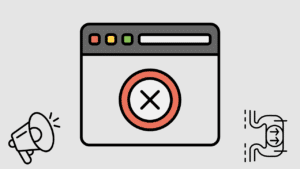User acquisition changed. Device identifiers are restricted, third party cookies are fading, and people expect control over what gets tracked on their phones. That sounds scary until you realize there is an upside. Privacy first marketing forces teams to build better products, sharper creative, and clearer consent flows. The result is more qualified installs and stronger lifetime value. This guide shows how to turn privacy into your advantage. You will learn what to measure without creepy tracking, how to shape pre permission moments, which creative choices still scale, and how to build a simple data stack that respects consent while giving you the insight you need. In this article, we’ll explore what we have beyond cookies, the privacy-first mobile app marketing x-factor for UA.
Start With A Product Signal That Does Not Depend On IDs
The most reliable growth loops come from the app experience itself. Before you chase a thousand targeting options, pick one outcome that a first time user can reach in five minutes or less. Then design onboarding to deliver that outcome on the first open. A meditation app can deliver a two minute session. A note app can save one note and set one reminder.
A fitness app can start a micro plan with the user’s name on it. You do not need to tie this to a device ID to see progress. You can track aggregate completion rates and session depth with privacy friendly analytics. When your early use moment works, your paid installs cost less over time because ratings rise, word of mouth increases, and algorithms notice higher quality.
Reframe Targeting As Context And Consent
Targeting used to mean following a user across the web. Privacy first targeting means matching your message to a real context and securing clear consent for the data you truly need. Context can be the platform interest category, the creative the person just watched, the search query inside an app store, or the location inside your own app where help is requested.
Consent is not a wall of legal text. Consent is a small set of decisions that a person understands. Ask for what maps to value. If your feature requires contacts or location, explain the win before the prompt appears, then show an obvious path to opt out that still lets the person use the app.
You will earn more yes responses when the ask is tied to the outcome the user cares about. You will also avoid the churn that comes from surprise prompts and unclear storage practices.
Replace Fingerprinting Thinking With Party Insight: Privacy-First Mobile App Marketing
Fingerprinting is a quick fix that becomes a long term risk. Instead, invest in first party data that people hand you because it helps them. Email for account recovery and receipts. Topic preferences for a better feed. Language and notification timing so alerts feel useful and not noisy. Store only what you need, keep it encrypted, and tell people where to change their mind. You can still run great UA while you hold yourself to a clear rule. If we cannot explain the value of a data field in one sentence, we do not collect it.
This discipline pays off later when you want to personalize onboarding, route support, or create subscriber offers. First party data is durable because it is mutual and expected.
Shape Pre Permission And Earn The Right To Ask
The system prompt is not the place where trust is built. You earn trust before it appears. Use pre permission screens to preview the benefit and to give one or two examples. A calendar app can show that reminders avoid missed meetings and that the user can choose which calendars to share.
A map app can show that precise location unlocks live alerts on nearby transit and that approximate location still works for browsing. Keep the language plain and the design calm. Then show the official prompt. When you do it this way, your opt in rate rises and your early churn drops because people feel informed.
Privacy-First Mobile App Marketing: Build Creative That Carries The Targeting Load
If you cannot depend on micro targeting, creative becomes your lever. The best performers do three things. They teach one use case in fifteen seconds or less. So, they show the app with a human hand and a real phone. They end with a moment that signals success. A simple checklist works. Hook that names the audience and the result. Three taps in the app.
A visible win. Call to action. Different versions can speak to different contexts without tracking a person across properties. For example, a fitness app can have a morning routine creative, a desk stretch creative, and a weekend outdoors creative. You can map each to placements where those moments are top of mind.
Measure What Matters Without Creepy Tracking
You can run a reliable marketing program with aggregate and consented insight. Focus on a short list. Click to install rate by creative, first run success rate, day one retention, day seven retention, subscription trial start rate, and support interactions per one hundred users using app marketing x-factor UA.
Tie spend to cohorts by campaign and platform, not by device, and optimize on quality not only on cost per install. A privacy first team chooses a cost per quality start that it can defend. That number might be a completed onboarding, a tutorial finish, or a certain level reached. Pick one that predicts revenue and make it your north star.
Use A Lightweight Data Stack That Respects Consent
You do not need a heavy tool chain. A consent manager that stores choices and surfaces them inside the app settings. A privacy friendly analytics tool that logs events without collecting identifying data by default. A server side event relay that sends only the fields you need to ad platforms for aggregated reporting.
A secure warehouse where you keep subscription and refund data. Keep documentation visible. What events exist, why they exist, and who can see them. That transparency speeds audits and lowers anxiety for legal and security teams.
Create A Testing Rhythm That Survives Platform Changes
Privacy policies will continue to evolve. Your best defense is a weekly rhythm that does not depend on any single tactic using app marketing x-factor UA. Plan one creative test, one onboarding tweak, and one small audience shift.
Forecast expected results, run the test for a full week, then archive the learning in a shared doc that your growth, product, and design teams can search. When a platform rule changes, you already know how to reallocate effort because your testing cadence runs like a habit.
Explain Privacy Choices Inside The App Like A Human
Legal pages matter, but most people never read them. Bring the spirit of your policy into small, visible moments. Show a readable line under each permission toggle. Let people see the data you have about them and make it easy to delete an item or the whole set. Remind them that saying no will not lock them out of core features except where it is truly necessary. The tone you use here is part of your brand. It earns reviews and referrals because it signals respect.
Privacy-First Mobile App Marketing: A Quick Table To Guide Your UA Strategy
Use this as a simple checklist for planning and reviews.
| Strategy Area | What To Do | What Not To Do | Primary Metric |
|---|---|---|---|
| Onboarding | Deliver one real outcome on first open, keep taps low | Greet with a wall of forms and surprise prompts | First Run Success Rate |
| Consent | Explain value before the system prompt and allow easy changes | Hide settings, bury opt out, collect fields you cannot justify | Opt In Rate By Permission |
| Creative | Teach one use case, show hands on phone, finish with win | Rely on generic stock and long monologues | Click To Install And Save Rate |
| Measurement | Use aggregate cohorts and privacy friendly tools | Depend on device IDs or fingerprinting for decisions | Day One And Day Seven Retention |
| Data Stack | Keep only what you need and document access | Copy every field into every tool by default | Support Interactions Per Hundred Users |
| Testing | Ship one creative and one onboarding test weekly | Pause testing until you find a perfect idea | Week Over Week Quality Starts |
Build Partnerships That Respect User Preference
Networks and platforms are adapting to privacy. Work with the ones that accept modeled and aggregated reporting and that provide brand safety controls. Ask partners how they handle consent and deletion requests. Agree on a small list of allowed parameters and stick to it. Strong partners will help you find contextual placements and creative formats that bring qualified users without excessive data exchange using app marketing x-factor UA.
Translate Privacy Into Your App Store Presence
Your store listing can signal respect before the install. Use one paragraph to explain what you collect and why it helps the user. Add a line about how to change those choices. Show screenshots that include permission flows so people are not surprised. Use replies to reviews to reinforce this tone. People read them. Your care earns trust in the exact moment a person decides to tap install.
A Thirty Day Privacy First UA Plan: Privacy-First Mobile App Marketing
Week one. Tighten onboarding to produce one outcome within five minutes. Write the pre permission copy and add a visible settings link on the home screen. Week two. Produce two short creatives that match two contexts and record them with a real phone.
Replace any network tracking that relies on fingerprinting with consented server side events. Week three. Launch one creative test and one onboarding tweak. Track first run success and day one retention. Update your store listing with a clear privacy note. Week four. Shift budget toward the highest quality cohort and archive a one page learning report. Schedule next month’s tests now so momentum stays high using app marketing x-factor UA.
Privacy-First Mobile App Marketing Final Thoughts
Privacy first is not a constraint. It is a filter that pushes your team toward clear value, honest consent, and creative that works without heavy tracking. When you build around these ideas, your UA becomes more resilient. Platform policies can shift and you will still be shipping tests, learning on schedule, and attracting users who stick. That is the x factor. You earn trust, you keep attention, and you grow with a clean conscience.








